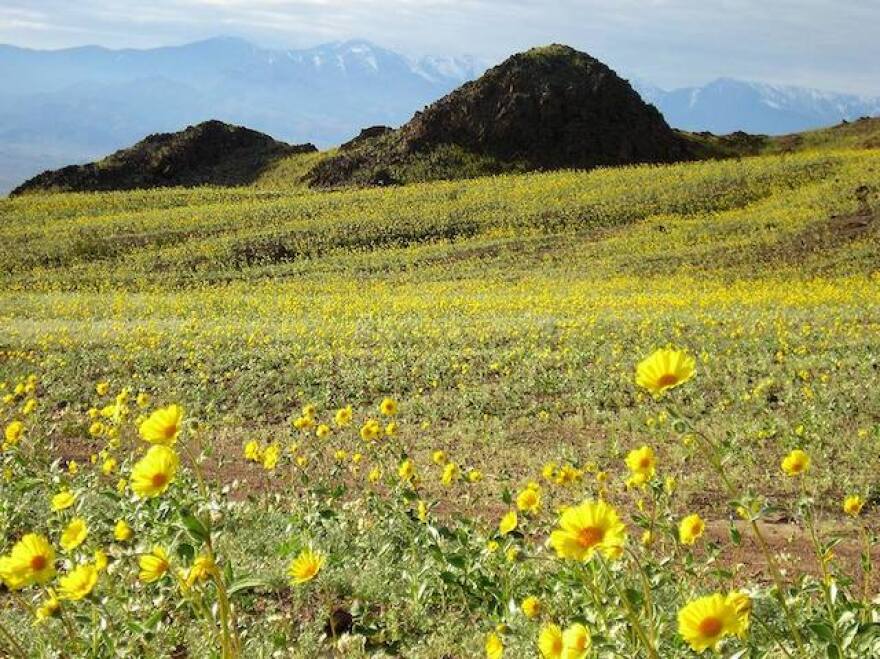This story is free to read because readers choose to support LAist. If you find value in independent local reporting, make a donation to power our newsroom today.
This is an archival story that predates current editorial management.
This archival content was written, edited, and published prior to LAist's acquisition by its current owner, Southern California Public Radio ("SCPR"). Content, such as language choice and subject matter, in archival articles therefore may not align with SCPR's current editorial standards. To learn more about those standards and why we make this distinction, please click here.
Rare 'Super Bloom' Of Wildflowers Could Spring To Life In Death Valley

Colorful wildflowers are spreading across Death Valley and park rangers say a rare massive bloom could cover the national park in the coming months. Death Valley has already seen an abundance of beautiful flowers springing up early this year, and officials believe that thanks to recent and expected El Niño rains, the park could be in for a once-in-a-decade "super bloom." Last month the L.A. Times reported that the bright yellow and purple of desert golds and sand verbena had already begun to crop up at lower elevations on the south side of the park. And recent wildflower reports and photos from the outdoors site Desert USA attest to "jaw-dropping" blankets of color in a number of areas, including the area south of Copper Canyon. In a YouTube video posted last week by Death Valley National Park, Park Ranger Alan Van Valkenburg shares his enthusiasm for the current conditions and the anticipated "super bloom."
"You always get flowers somewhere in Death Valley almost every month of the year, but to have a big bloom like this, which we hope will become a super bloom—which is beyond all your expectations—those are quiet rare," Van Valkenburg explains. "Maybe once a decade or so."
And while "super bloom" is not a technical term, it's certainly a fitting term for the remarkable display of flowers that we can expect to see. Take a look at what visitors are already seeing across the park and imagine what could be in store:
The last "super blooms" occurred in 1998 and 2005, and are quite a spectacle to behold. "The alluvial fans, hillsides, valley floor, and washes were covered with solid carpets of flowers that went on for miles and miles," Van Valkenburg told the National Parks Conservation Association. "In a normal springtime there will be scattered flowers here and there, but during a super bloom, almost every possible place a flower can grow, it will. It totally transforms Death Valley into a valley of life."
Of course, Van Valkenburg also explains that a hard freeze could kill sprouts, strong winds could dry them up and El Niño rains could come too soon or too late, but he's still optimistic that we'll be in for a treat this year.
The L.A. Times points out that the best way to see the current blooms is to take Highway 190 to Badwater Road, heading south. Though, keep in mind that Badwater Road is closed from Ashford Mill to Shoshone.







